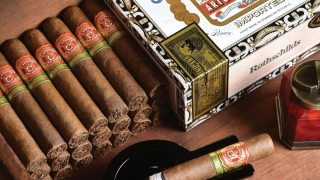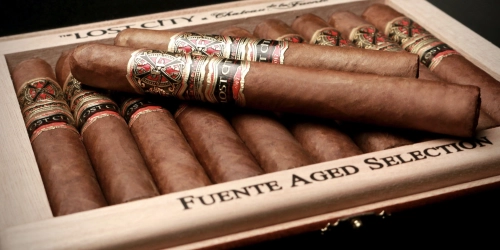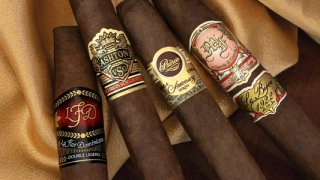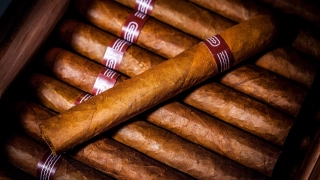Dominican Cigar: Taste Profile, Aroma, and Health Risks
Dominican cigars are among the most respected worldwide, often seen as the main rivals to Cuban cigars. Tobacco is grown in fertile valleys like Cibao and rolled in Santiago de los Caballeros, the country’s cigar capital. Brands such as Arturo Fuente, Davidoff, and La Aurora are known for smoothness, consistency, and refined taste.
Dominican cigars contain nicotine and combustion by-products. Even without inhaling, nicotine is absorbed through the oral cavity. Not recommended for pregnant women, people with cardiovascular or respiratory conditions, or those sensitive to tobacco smoke.
What does Dominican Cigar taste like?

Complete Sensory Description
-
Taste: Dominican cigars are typically smoother and milder than Cuban ones. They offer a creamy, nutty base, layered with cedar, light pepper, cocoa, dried fruit, and vanilla notes. Some blends lean towards sweetness (honey, caramel), while stronger lines carry earthy and leathery undertones.
-
Aroma: The aroma is elegant, often with hints of fresh wood, roasted nuts, coffee beans, floral oils, and subtle spices. Compared to Cuban cigars, Dominican aromas are less aggressive but more refined.
-
Texture: Smoke feels soft, silky, and creamy, coating the palate without overwhelming strength. Ash is light gray and moderately firm. Draw is generally smooth and consistent.
-
Appearance: Wrappers vary from Connecticut shade (light golden) to maduro (dark chocolate brown), with an even, slightly oily finish. Dominican rolling standards are among the highest in the industry.
In-depth Flavor Analysis
The Dominican Republic’s soils are rich in calcium and magnesium, which enhance smoothness and creaminess in tobacco. Extended fermentation cycles reduce harsh compounds and promote the development of terpenes (floral, herbal), pyrazines (nutty, roasted), and lactones (creamy, sweet).
Dominican cigars are generally medium-bodied but versatile: they can range from very mild to strong, depending on the blend. This flexibility makes them suitable both for beginners and experienced smokers.
Cigar Anatomy & Flavor Influence
-
Wrapper: Dominican cigars often use Connecticut shade wrappers, which give a mild, creamy flavor with hints of cedar and nuts. Maduro wrappers bring sweetness and chocolate-like tones.
-
Binder: Usually neutral, ensuring an even burn, sometimes adding light earthiness.
-
Filler: A blend of Dominican tobaccos, sometimes combined with Nicaraguan or Peruvian leaves to enhance complexity. This creates layered flavors without sharpness.
Varieties and Smoking Traditions
-
Arturo Fuente: Rich and balanced, with nutty and cedar-driven notes.
-
Davidoff: Premium, refined, with floral, creamy, and woody complexity.
-
La Aurora: The oldest Dominican brand, offering both mild and full-bodied cigars.
-
Ashton: Known for consistency and approachable mild blends.
Smoking traditions highlight Dominican cigars as excellent for beginners due to their smoothness, but also respected among aficionados for their elegance.

Selection, Storage & Aging
-
Selection: Choose cigars with uniform wrapper color, silky surface, and firm but elastic body. Dominican cigars are known for exceptional consistency, making selection easier.
-
Storage: Store in a humidor at 65–72% humidity and 18–21 °C. Dominican wrappers, especially Connecticut shade, are delicate and require stable conditions.
-
Aging: Mild Dominican cigars develop deeper honey, nut, and cream flavors after 3–5 years of aging. Stronger blends gain complexity, with leathery and woody undertones becoming smoother after a decade.
Expert Insights & Pairing Tips
-
Coffee (espresso, cappuccino): Highlights nutty and creamy qualities.
-
Rum (light or aged): Brings out sweetness and caramelized notes.
-
White wine (Chardonnay, Viognier): Complements mild Dominican cigars with fruity and floral balance.
-
Cognac or Brandy: Pairs well with medium-bodied blends.
Experts often recommend Dominican cigars as a starting point for novices due to their balanced and non-aggressive profile.
Interesting Facts & History
-
After 1960, many Cuban cigar families emigrated to the Dominican Republic, laying the foundation for today’s industry.
-
The country is now the largest exporter of cigars in the world.
-
Davidoff, originally a Swiss brand, moved production entirely to the Dominican Republic in 1991.
-
Dominican cigars are often considered the most consistent in quality, thanks to advanced cultivation and rolling techniques.
Harm and Health Considerations
Cigar smoke contains tar, nicotine, and carbon monoxide. Even without inhalation, it increases risks of oral cancer, gum disease, and cardiovascular problems. Prolonged exposure can lead to nicotine dependence.
Religious & Cultural Considerations
-
Islam: Most scholars classify smoking as haram due to harm.
-
Christianity & Judaism: No strict prohibitions, though moderation is advised.
-
Dominican culture: Cigars are an important national product and a source of pride.
Final Thoughts & Sensory Journey
Dominican cigars are celebrated for their smooth, creamy, and refined taste. They provide a gentle yet complex smoking experience, making them ideal for both beginners and connoisseurs. Their elegance, consistency, and cultural heritage secure their place alongside Cuban cigars as global benchmarks.
Resources
-
Perelman RC. Perelman’s Pocket Cyclopedia of Cigars. ISBN 9780966489032
-
Min Ron Nee. An Illustrated Encyclopaedia of Post-Revolution Havana Cigars. ISBN 9628604292
-
Dorado J. Dominican Cigar History and Industry. ISBN 9781535375129
-
Halliday J. The Cigar Companion. ISBN 9781857329730

